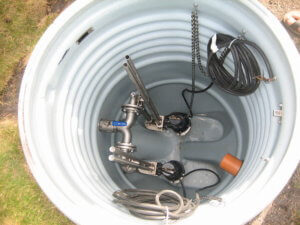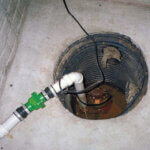Everything You Need To Know About Your Sump Pump
Maybe you live in an area that is occasionally prone to flooding because of heavy rainfall or your basement is built below the water table. If you face these issues, then you know the importance of a sump pump in discharging the rising water that would flood your house if left uncontrolled. Apart from flooding your basement, if the water remains stagnant it can act as a vector for waterborne diseases like dysentery. It could also electrocute anyone who stands in or touches it while in contact with live wires. Standing water can dampen your basement and promote the growth of mold, too. If you inhale the mold, it can lead to respiratory problems like asthma and other allergic reactions that can prove fatal.
To prevent these accidents and damage, there are measures you can take to ensure that your sump pump is in great condition and that you and your loved ones are safe.
How To Know That It’s Time To Replace Your Sump Pump
If you installed your sump pump correctly, it should produce a humming sound as it pumps water away from your basement. If you can hear the noise from your living room, then it’s time to check and potentially replace your sump pump.
Loud noises from your sump pump signal that it is worn out or poorly installed. Start by checking your drainage pipes. If they are angled sharply at the sump pump pit, then you should measure and angle them correctly or call a plumber to help you. Another measure is to insulate the pipes to muffle the banging noises. Loud noises from your sump pump can also be a signal that the pump’s impeller has debris. When the pump is not in use, take it out and inspect it. If debris is clogging any components, clean them and take note to replace any worn-out parts.
Your sump pump should run when pumping water and stop once the level of water goes down to predetermined levels. If yours is constantly running, it might signify that the pump is worn out or quickly approaching the end of its life span. It can also indicate that the pump was not the correct size and is overwhelmed with the volume of water it’s pumping. This will lead to quicker wear and tear of the pump and premature failure.
A faulty float switch can also make your sump pump run constantly. As the name suggests, a float switch floats on the water and triggers the mechanism that turns the sump pump on when the water gets to a predetermined level. If debris jams your float switch, it will send a signal to turn on the sump pump. This will keep the pump running constantly and if you don’t take immediate action, the pump will break down.
If your pump clogs often or cycles erratically then it could be an indicator that you need to service your pump or buy a new one. The best action for you to take is to switch off the sump pump and examine the whole setup. Check your float switch, discharge lines, and pump.
How Can You Replace a Worn-Out Pump?
After you assess the condition of your pump and ascertain that it is worn out or spoiled, what next?
The first thing to keep in mind is the reason for replacement. If you are replacing a pump that served you well and has come to the end of its life span, then the decision is straightforward. All you have to do is get a newer version of the same model you have been using or something similar. But, if your pump was broken or failed to work as expected then you should consult a plumber on the best sump pump to install based on your needs.
Once you get the correct sump pump, follow these steps to install it:
- Unplug the old sump and disconnect the sump pump from the discharge line.
- Measure a new length of PVC pipe to connect to the discharge line. The trick here is to cut 2 or 3 inches longer than the measured length and then trim to fit.
- Connect the discharge pipe to the new sump pump and ensure the seals are airtight.
- Lower the new sump pump into the pit and ensure that it sits well inside the basin. It should not be entangled in any way or press on the walls of the basin. Also, ensure that it’s well fastened and level when you tie it to the concrete floor.
- Check the float switch and position it at the right height.
- Connect the discharge line and the check valves to the PVC pipe that you had fixed on the pump. The check valves will ensure that water doesn’t run back to the basin.
- Test your new sump pump. Do this by filling the basin with water to the level that mimics your predetermined level, and examine to see if the sump pump switches on automatically and discharges the water to the designated area.
Once You Have Installed the New Pump, How Do You Prolong Its Life Span?

Image via Flickr under CC BY 2.0 by Sustainable Sanitation
Cleaning and test running the sump pump regularly even when not in use should be enough.
Start by ensuring that the wiring is correct. Fasten loose wiring to ensure that the pump doesn’t cut off unexpectedly. Also, confirm the condition of the check valve. Replace it if needed. These actions will ensure that the pump cycles perfectly. Next, check the discharge pipes. If ice is frozen or debris has clogged them, the pump will not be able to discharge any water. This might strain the pump and wear it out or permanently destroy it. Make sure all discharge lines are clean and that the pump is free of debris.
Are You Planning To Replace Your Sump Pump?
If you have been looking for high-quality sump pumps at the best prices, check our catalog. At Allied Plumbing and Heating Supply Company, we stock a wide variety of sump pumps and chances are, we have the correct pump that you are looking for. Send us the model details of the sump pump you’re looking for and we will reply with expert advice regarding the best pump for you to buy.


